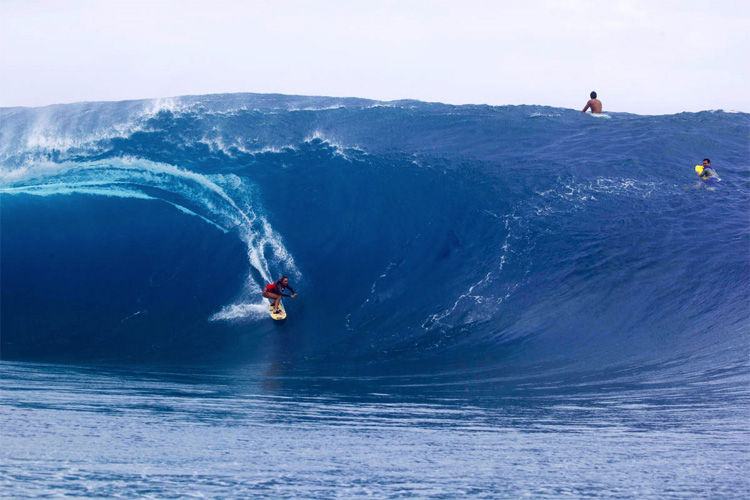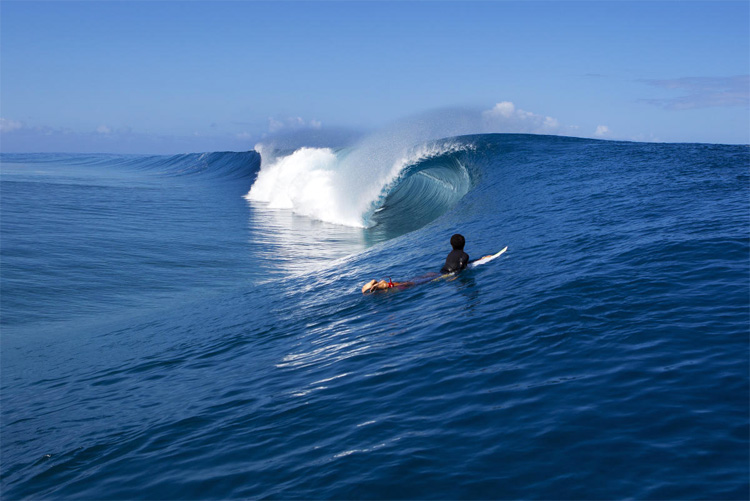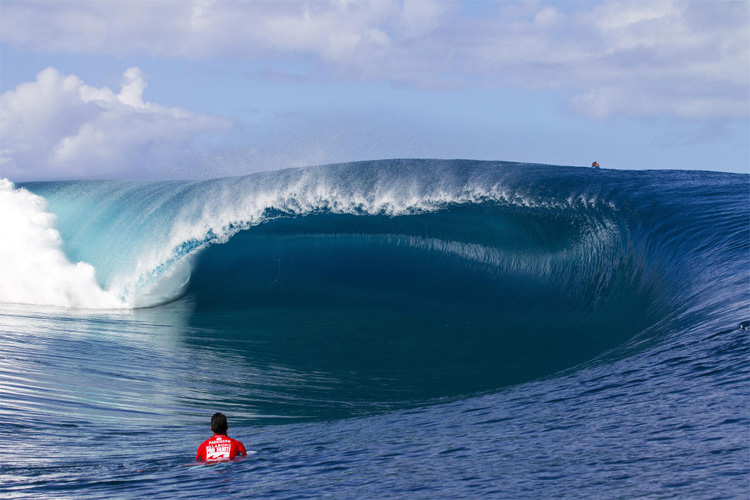Teahupoo is one of the heaviest and most powerful waves in the world and, as its etymology shows, the place is a do-or-die surfing arena.
Located at the southwest tip of Tahiti, in French Polynesia, Teahupoo is the typical Pacific freak of nature.
The hollow and thunderous surf spot breaks approximately 500 yards offshore in an abrupt deep-to-shallow coral pass.
In order to understand the origin of the word "Teahupo'o," it's better to split it into its three components or parts:
- te (Tahitian/Polynesian) = the (English);
- ahu (Tahitian/Polynesian) = pile, central stone, raised platform, mound, altar, heap (English);
- po'o (Tahitian/Polynesian) = head, front end, director, father (English)
The local language says it all.
When we blend the Polynesian word Teahupo'o together, we get its meaning: the pile of heads, the heap of heads, or the hot head.
Supposedly, it honors the son of a murdered king, who avenged his father's death by eating and drinking the fresh brain of his father's murderer.

The End of the Road
Teahupo'o is also the name of the tiny coastal village with a privileged view over the iconic surf break.
The correct spelling is "Teahupo'o," and it should be pronounced correctly as "tear-hoo-poh-oh."
If you can't say it, avoid the common alternatives "cho-poo" or "chopes" - the Polynesians don't have the "ch" sound.
Teahupoo is also known in the surfing world as "The End of the Road." Why? Because it literally breaks directly offshore from the end of a local paved road.
There are no limits to what this wave can deliver. When it roars to life with a southwest swell, you can hear it from a great distance.
And when surfers think they've seen it pumping its maximum size, Teahupoo breaks its own records.
Interestingly, Tahiti's deadly mutant slab was first discovered and ridden by the bodyboarding legend Mike Stewart.
Today, Teahupoo is a big wave surfing Mecca and undeniably one of the most challenging extreme left-hand waves on the planet.

A Deadly Reef Break
Teahupoo is not the place where mistakes are forgiven. The infamous has already taken the lives of a handful of surfers since 2000.
One of them was Briece Taerea, a local rider who got caught inside and hammered by a 15-foot set while trying to duck dive it.
The ride at Teahupoo is short - between 75 and 100 yards - yet extremely fast and intense.
If you're able to make the drop, which quite often means an elevator drop - and set your left rail inside the barrel, you may get unlucky and exit the double overhead spitting cylinder.
Known for its super thick, mean wave lip, Tahiti's violent liquid guillotine turns into a horrendous death sentence in a matter of minutes when the shallow reef starts running close to dry.
A ten-foot wave here equals a 30-foot moving mountain beast in a beach break.
Going over the falls at Teahupoo is a synonym for getting pounded, beaten down, and held down indefinitely.
Breaking boards here is never your biggest problem.
